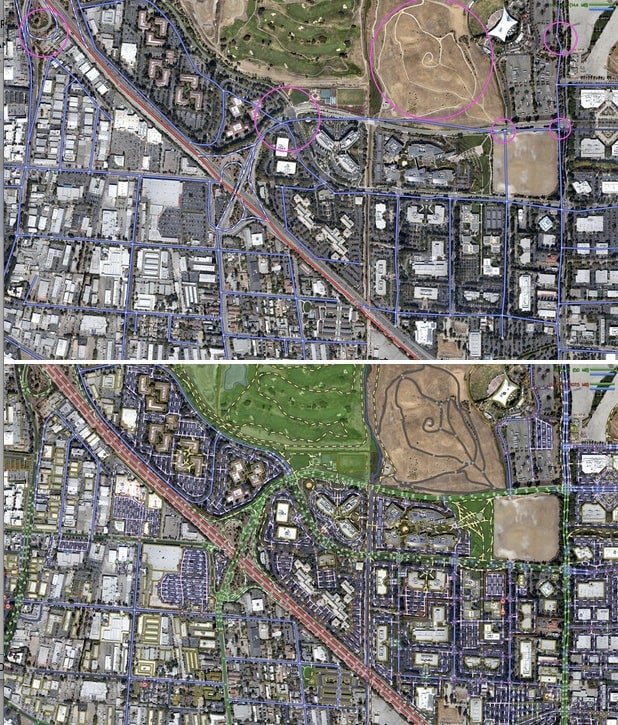Why Google maps is better than Apple’s: real people collect its data
There’s a simple answer: people.

There’s a simple answer: people.
For all of Google’s reputation as a data-data-data company, the company’s famed mapping product, which arrived on iOS early this morning, is good for a different reason: people. In reporting earlier this year about how Google builds its maps, I stumbled upon a massive operation requiring vast amounts of human labor. Basically, the company can acquire all kinds of data — from governments, cars driving the streets, satellite imagery, private data stores — but humans must compile all these things. We are the ones who understand the logic of the streets and can embed it into the locations on the map.
Google has a tool called Atlas that has dozens of layers of information. Thousands of people, who Google calls “operators,” use this tool to massage the data. Let me show you how the data begins and how it ends. In the top map, you see roughly the raw data from the US government (TIGER data). It looks pretty decent at first, but as I’ve circled in pink, there are big problem areas if you’re trying to do point-to-point directions.

Down here at the bottom, you can see the completed map after Google’s operators went through it. There are dozens of small changes both to the roads themselves and the secondary infrastructure throughout (parking lots, etc).
The operators have access to incredible amounts of data including both images that Google Street View cars take and the GPS traces that show precisely where the cars drove. Again, this requires lots of people working kind of grueling conditions. If Google’s driving operation works like Nokia’s, which I think it does, then you’ve got people away from their homes for weeks at a time. They drive nine hours a day, sleep in a hotel in San Jose or Topeka or Tallahassee, get back up the next day and keep driving, guided by a computer system that’s determined the most efficient route to drive every street in a city. The drivers are like oil rig workers, but the resource they’re collecting is data about the physical world. The car fleets work the north of the country during the summer to avoid inclement weather, and then move south for the winter.
And they can never stop driving. Because change always happens. The map is never perfect: Nokia’s Cliff Fox estimates that 5 to 20 percent of the 400 datapoints they keep for each road segment in their system change each year.
A key challenge that both Nokia and Google are working on is decreasing the amount of time between updates to their data. There, Google has a cultural advantage over other companies that started out making GPS units for car and truck fleets. They want everything to be real-time because their customers are getting their updates in real time through Google’s online services. With vehicles, updates tend to be batch processed at cycle times of 12 to 18 months. Nokia bought Navteq* and Apple brought in TomTom data (and may buy the company?); both of these companies got their start in the vehicle market.
Nokia had been making quarterly updates, but Nokia’s Fox told me they’d be at weekly intervals by the end of the year. Apple may be in a tougher position because they don’t own all their own data; we don’t know what the feedback process is for improving their maps. My guess is that it can’t be better than Google’s, which is approaching the real-time dream, according to Google’s Manik Gupta, the senior product manager for Maps. That means that not only are Apple’s maps worse, but they’re probably not even improving at a faster clip.
The takeaway here is odd. It’s not about Big Data but Big Labor. Apple employs roughly 25,000 people in the core business (outside retail), so it might be unthinkable to hire a few thousand people (more than 10 percent of the current company) to make its maps competitive. But so far, that’s the only proven way to build a great digital mapping system. Deal with that. Or deal with Google.
* In a previous version of this post, I wrote that Nokia bought Garmin, but they didn’t. They bought Navteq, of course, as noted in this story. I regret the error.
This post originally appeared on Theatlantic.com.
More from our partner site:
How to save global trade from thieves, pirates, and black market kingpins